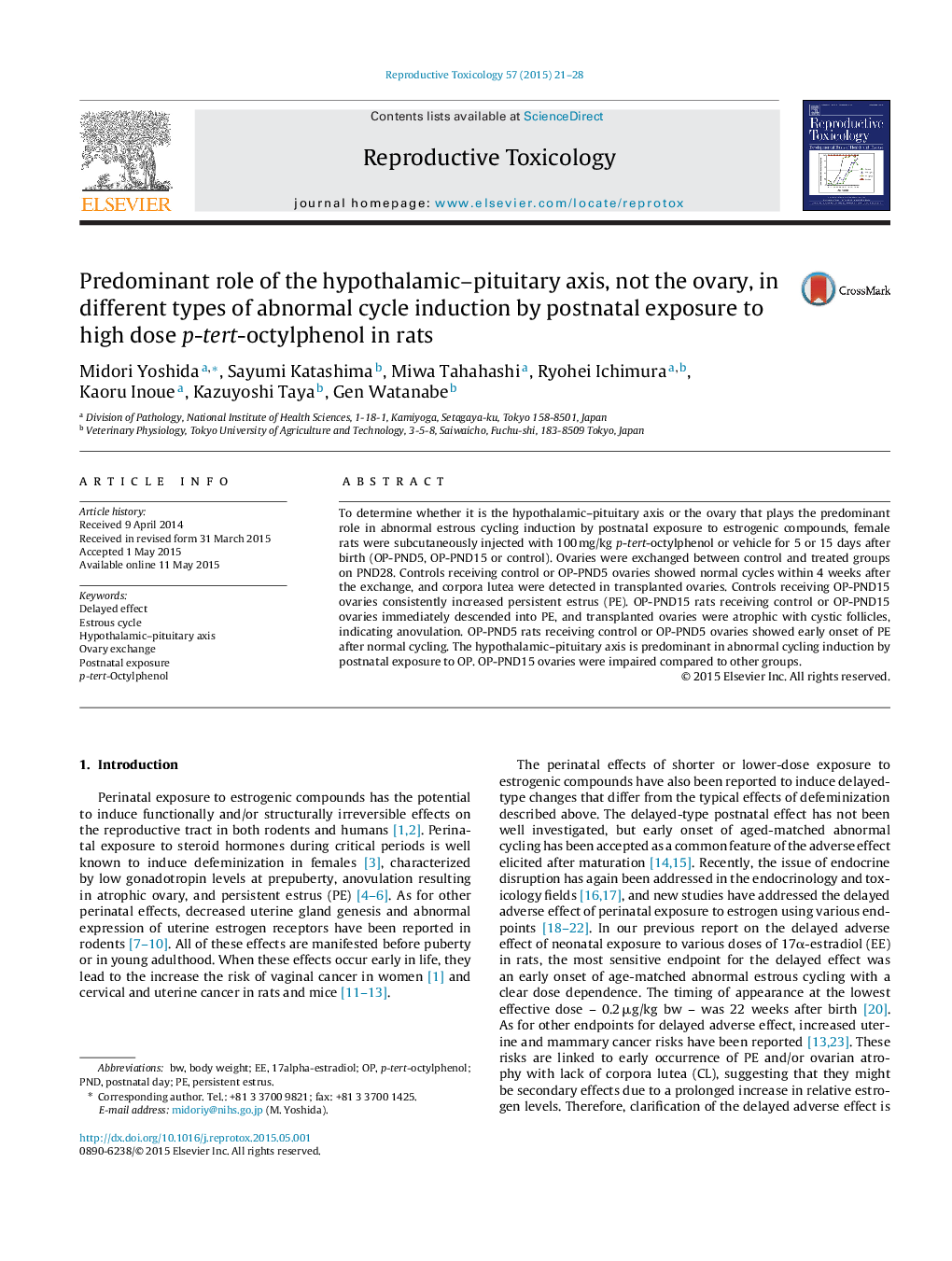| Article ID | Journal | Published Year | Pages | File Type |
|---|---|---|---|---|
| 2593382 | Reproductive Toxicology | 2015 | 8 Pages |
•Hypothalamus was predominant for abnormal cycle induction by postnatal exposure to OP.•The hypothalamus of recipient controlled the donated ovary.•Postnatal exposure to OP had no effects on ovulation and reproductive ability.
To determine whether it is the hypothalamic–pituitary axis or the ovary that plays the predominant role in abnormal estrous cycling induction by postnatal exposure to estrogenic compounds, female rats were subcutaneously injected with 100 mg/kg p-tert-octylphenol or vehicle for 5 or 15 days after birth (OP-PND5, OP-PND15 or control). Ovaries were exchanged between control and treated groups on PND28. Controls receiving control or OP-PND5 ovaries showed normal cycles within 4 weeks after the exchange, and corpora lutea were detected in transplanted ovaries. Controls receiving OP-PND15 ovaries consistently increased persistent estrus (PE). OP-PND15 rats receiving control or OP-PND15 ovaries immediately descended into PE, and transplanted ovaries were atrophic with cystic follicles, indicating anovulation. OP-PND5 rats receiving control or OP-PND5 ovaries showed early onset of PE after normal cycling. The hypothalamic–pituitary axis is predominant in abnormal cycling induction by postnatal exposure to OP. OP-PND15 ovaries were impaired compared to other groups.
